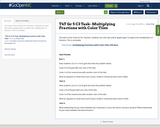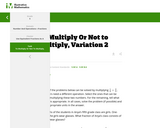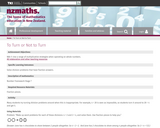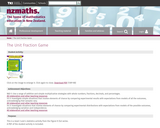
This task is from Tools for NC Teachers. Students use color tiles and/or graph paper to explore the multiplication of fractions. This is remixable.
- Subject:
- Mathematics
- Material Type:
- Activity/Lab
- Formative Assessment
- Date Added:
- 07/12/2019

This task is from Tools for NC Teachers. Students use color tiles and/or graph paper to explore the multiplication of fractions. This is remixable.

This video demonstrates the functions of the TI-15 calculator. It may be used as a professional development for teachers, or for training students. It is not recommended that the video is shown to students in its entirety. If you scroll down to the comments section under the video, time markers for each function are provided. Click on the time markers to go directly to that specific function.

This packet contains a curriculum-embedded aligned task and instructional supports. The task, Time for Recess, has been designed to give a thorough understanding of multiplication of fractions, using both an area model and the algorithm. After an in-depth unit of study involving multiplication of fractions through modeling and use of the standard algorithm, students will complete three real-world problems to demonstrate an understanding of interpreting a fraction as division of the numerator by the denominator and multiplying fractions using an area model and the standard algorithm.

This task helps students determine when and why an operation is appropriate for solving a story problem involving fractions. While all operations are considered, students will have the opportunity to specifically explore the different contexts in which multiplying and dividing fractions are required. Comparing and contrasting the actions in these story problems will account for rich discourse surrounding the mathematics.

Students solve division problems that have fraction answers.

Students compare fraction sums and products to 1.

Students are provided with a scenario and asked to determine The weight of a bar of soap. The mathematics task is intended to be a problem or question that encourages the use of mathematical practices. The dialogue is meant to show how students might engage in the mathematical practices as they work on the task.